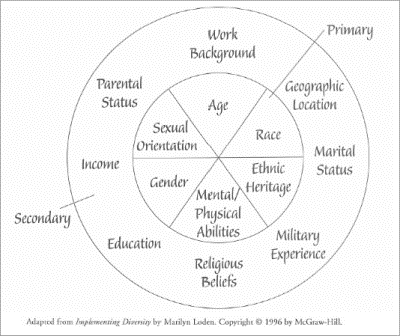 Diversity and Inclusion in Higher Education: System Change or PR?
Diversity and Inclusion in Higher Education: System Change or PR?
Dr. Carlos Tasso Eira De Aquino
Originally published in HigherEdJobs
[Editor’s Note: This article originally appeared in HigherEdJobs on November 30, 2021]
Universities around the world face constant challenges related to the highly competitive environment in which they operate–in a world without borders, shrunk by globalization. Like companies in any other industry, educational organizations must compete with institutions all over the world for consumers. Students in any part of the globe can now opt to attend a class at most universities without ever leaving their home, due in large measure to the incredible advances of technology in the 21st century.
Given this reality, diversity and inclusion (D&I)–both in person and in the digital realm–has been playing an increasingly important role within higher education. Universities around the world must embrace differences not only to enroll a new cohort of talented students, but also to form and graduate professionals who are fully prepared to enter the diverse workforce driving our global economy. The survival of today’s educational institutions depends, therefore, on developing truly inclusive campus and online environments.
With so much at stake for colleges and universities, the question is this: Are higher education institutions serious about embracing diversity and inclusion at the systemic level, or are they using this theme merely as public relations in this unique moment in history?
In tackling this question, it is important to understand Frederick Herzberg’s Motivational Theory. Over the past several years, D&I moved from being a “motivation” factor to a “hygiene” factor to attract new students. Institutions that are not clearly addressing the issue of diversity and inclusion are becoming less attractive to current students. Therefore, to mitigate this loss of potential students–and revenue–many institutions are creating Offices of Diversity and Inclusion, and hiring professionals to manage those areas, sometimes without even having a clear understanding of what D&I encompasses.
My goal here is not to judge institutions or their D&I actions, but instead to provide a foundation for developing and implementing a serious and holistic approach to D&I.
In this first article of this series, I would like to address the common lack of a comprehensive understanding of what diversity and inclusion mean, and how this can tarnish the creation of a real inclusive atmosphere. In future articles, I will speak to the entire process of creating a sound diversity and inclusion program, and how to pursue diversity management.
A clear and holistic understanding of what is D&I represents a key component for educational institutions to become and/or remain inclusive environments. Nowadays, it is becoming all too common for people to dive into a discussion of diversity with the assumption that everyone agrees about what “diversity” means. But what does the word “diversity” really entail? One common answer is to think of diversity simply as issues of race and gender, to the exclusion of all other dimensions. That is really a myopic and ineffective approach, leading to unsuccessful outcomes. Diversity goes way beyond this basic interpretation.
Tina Rasmussen states, “Diversity is the mosaic of people who bring a variety of backgrounds, styles, perspectives, beliefs, and competencies as assets to the groups an organization with whom they interact.”
 A comprehensive definition of diversity encompasses multiple dimensions that need to be considered for the creation of an authentically inclusive environment. “Diversity and Inclusion in the Global Workplace” analyzed D&I under a multi-dimensional approach with applications, based on the seminal works of Loden. The latter proposed a definition of diversity composed of primary and secondary dimensions. Those dimensions can be seen to the right.
A comprehensive definition of diversity encompasses multiple dimensions that need to be considered for the creation of an authentically inclusive environment. “Diversity and Inclusion in the Global Workplace” analyzed D&I under a multi-dimensional approach with applications, based on the seminal works of Loden. The latter proposed a definition of diversity composed of primary and secondary dimensions. Those dimensions can be seen to the right.
The primary dimensions–located in the middle of the diagram–are usually the most volatile and subject to legal action. These are, according to Loden, the dimensions we are born with or that people think they can identify about us just by looking at us. They are volatile because we are all being stereotyped by others before we have even had a chance to say a word.
The secondary dimensions are those we have some control over. Also, we can choose whether to reveal these dimensions or not, so there is more control of what others know and less room for immediate stereotyping. Keep in mind that secondary dimensions are in no way less important than primary dimensions.
After an agreement is reached on what diversity is, the educational institution only then can prepare itself accordingly for the development and implementation of D&I initiatives. This undertaking needs to have the support of the institution’s highest leadership, as well as the identification of the agents of change who will be in charge of the transformation. All this will be discussed in future articles of this series.
Opinions expressed are solely my own and do not express the views or opinions of Gettysburg College.
HIRE AN INTERIM
Searching for an Interim?
Please contact us for more information.

